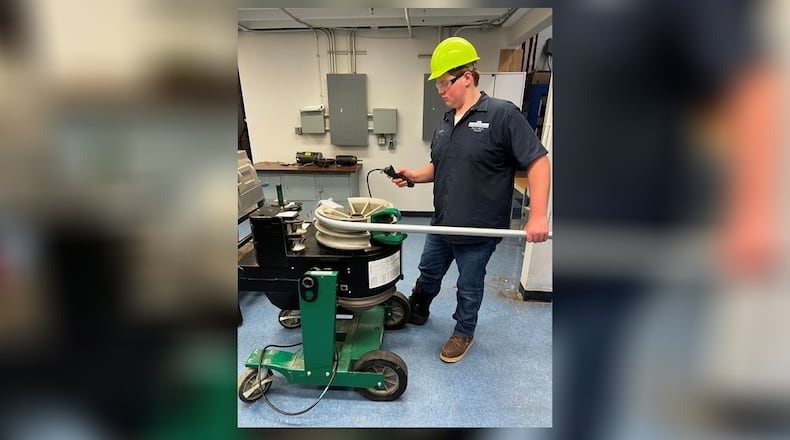“They’re one of the basic ways to grow our trade,” said Tony Stephens, apprenticeship coordinator with the Local 24 union of sheet metal workers.
“Apprenticeships have never been more important than they are now,” said John Morris, president and chief executive of Ohio Valley Associated Builders and Contractors.
Last week was National Apprenticeship Week. But for 17-year-old Miami Valley Career Technology Center (MVCTC) student Owen Rhoades, a pre-apprenticeship program is part of his life each working day.
The Brookville resident and MVCTC senior is an electrician’s apprentice at Active Electric Inc. in Dayton.
Rhoades knows that if he does a good job in the pre-apprentice program, he likely will have a job waiting for him after graduation — a decent-paying job.
And college debt? That won’t be a problem for him.
“It’s a great feeling,” Rhoades said in an interview. “All my hard work has paid off.”
Ohio ranks first in the Midwest and third in the nation for the number of people enrolled in apprentice programs, the state says.
More than 19,500 Ohioans are enrolled in ApprenticeOhio programs. The state has apprenticeships in 180 occupations, from health care to advanced manufacturing, from energy to computer programming.
Stephens said the “silver tsunami” — an expected onslaught of retiring workers in the trades — could mean the loss of 30% of his 300 local members in coming years.
Stephens, who got his start an apprentice, said he has about 63 apprentices today, a number that has slowly but steadily grown over the years.
Adding to the pressure (and the opportunity): According to the U.S. Department of Labor, some 4.3 million people quit their jobs in August. That’s almost 3% of the workforce.
Nationally, opportunities abound in construction for people at all levels of skills and experience — anywhere from 430,000 to 1 million jobs need to be filled this year alone, according to Ohio Valley Associated Builders and Contractors.
People are realizing the importance of the trades, Morris, Stephens and others say.
“The college-for-all mentality just did not work,” Morris said.
Robert Ewry, school-to-work apprenticeship coordinator for the MVCTC, said today he has 105 students, with 20 who are in pre-apprenticeship programs.
Workers can’t be in a registered apprenticeship unless they have a high school diploma. But pre-apprentice students are often actually working for a company during school, Ewry noted.
“I think it’s on the trend upwards,” Ewry said.
Advocates don’t sugarcoat the trades. The work is just that — work.
“It’s a hard job. It’s hard on your body,” Stephens said.
Work in the sheet metals sector can be physically demanding, involving bending, stretching, crawling and lifting, he said. It can be hot in the summer, cold in the winter.
Still, for those who have what it takes, apprenticeships pay off, he said. If young people go through the process and learn a trade, their value rises if they obtain a journeyman’s card.
“The students, they’re more productive, they’re safety-trained,” he said. “It’s better off for the student, and it’s also better off for the employers. … It’s getting them a pipeline.”
About the Author

